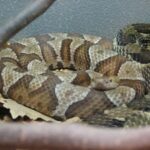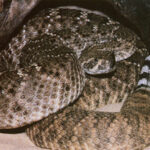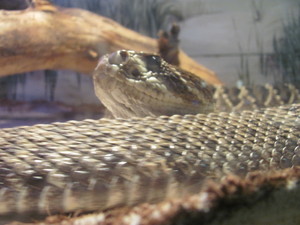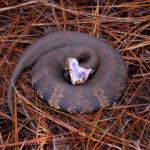Growing up as a resident in rural a desert community can provide a great deal of excitement. There may not be a great many places to go, the shopping centers don’t even come close to the malls of Los Angeles and New York City, however, there are a great many aspects of nature to discover. It is partly this background that drives my passion for animals, wildlife, and the environment around us. It is also due in part to this background that I am more aware and educated about the dangers of the great outdoors and its many venomous creatures. As a child I can remember hearing many stories about the Black Widow Spider, I was even bit by one. I heard tales of snake bites. I caught snakes, lizards, birds, spiders, ants, you name it. But the one thing that proved most useful was knowing just how to treat a snake bite. In the deserts of California, the Rattlesnake can prove a troublesome opponent.
Luckly for victims of rattlesnake bites, the mortality rate is low at only 0.28% for those treated with the antivenin, and 2.6% for those without antivenin treatment. (WebMD, 2006) However, that doesn’t mean that the number of bites are as low, ever year nearly 8,000 people in the U.S are bitten by venomous snakes, according to the FDA, 9-15 of those 8,000 die. (Rhoades, 2007). David Hardy, a physician in Arizona well accustomed to treating venomous snakes bites states that “People often aren’t trained in what to do, and they are in a panic situation.” (Henkel, 2004). This panic situation doesn’t have to happen to you. Before you go hiking or out on a wilderness trip, study up on snakes, how to prevent bites, and how to treat them. Immediate treatment can be the difference between life or death.
There are two families of venomous snakes in the U.S with the vast majority being in the Pit Viper family. A family containing rattlesnakes, copperheads, and cottonmouths otherwise known as water moccasins. (Henkel, 2004). Pit vipers are the number one offender as far as snake bites go in the U.S, and they can be found throughout the country. Most rattlesnakes inject a hemotoxin that causes vast amounts of swelling that cuts off that results in about 1/3 of the victim’s blood circulation being lost to the tissue only hours after the toxin is injected. (Mar Vista Animal Medical Center, 2004). This loss of circulation disrupts blood clotting leading to uncontrolled bleeding, shock from blood loss, and eventually death if left unchecked.
A neurotoxin, the same classification of toxin found in spiders like black widows, is injected by a breed of California rattlesnake located in or around the Mojave Desert area. This neurotoxin generally focuses its ill affects on the brain and spinal cord (the central nervous system) of the victim.
Rattlesnakes can be classified and identified by their diamond shaped head. Out in the desert and other bushy areas, the diamond shaped head is notorious for meaning “poisonous.” Pupils of a rattler are also vertical and there are 2 pits beneath the nostrils. (Rhoades, 2007). Of course, if all else fails, rattlesnakes generally give of a rattle of their tails when they feel threatened. While this doesn’t happen every time, it is a good indication that trouble is near and you need to back off. Try to listen closely while out walking in the bush. Symptoms of a rattlesnake bite include two puncture wounds from the snakes fangs, pain, tingling, or burning at the site, swelling at the site, and bruising or skin discoloration at the site of toxin injection. (Rhoades, 2007). The toxin can also cause numbness, nausea, weakness, difficulty breathing, and other more serious symptoms. The longer you wait for treatment, the more serious the effects will be.
The second family is called Elapidae and includes Coral snakes who also inject an extremely dangerous neurotoxin into their victims. These snakes are found in fewer parts of the country and generally can be found in the Southern U.S.A. Luckily, both Pit Viper, and Coral snake bites are treatable, and have an antivenin available. Thus, immediate medical care is necessary in order to inject this antivenin to effectively counter the venom and prevent further injury due to the snake injected toxins. David Hardy, the aforementioned Arizonia snake bite physician admits that most people don’t seek the medical help they need soon enough. They wait until the pain becomes unbearable and then seek the help of a doctor. However, by then the toxin has had hours to do damage inside the body and even treatment may not be able to reverse the adverse potentially debilitating effects of the venom. (Henkel, 2004). Most snake bites don’t occur in areas where medical help is too far from reach. However, if they do, if you’re alone, or if medical help is hard to reach or will take a while to reach, there are steps you can take to ease the effects of the venom.
Coral snakes are harder than rattlesnakes to detect and identify. Their fangs are smaller, so puncture wounds aren’t always evident. Their neurotoxin yields similar symptoms, and is extremely dangerous.
The American Red Cross promotes several steps for caring for a venomous snake bite. First and foremost, it is important to wash the bite site thoroughly. Use soap and water when doing so. Next immobilize the bite victim and bitten area. Keep the bitten area lower than the heart easing the flow of contaminated blood to the heart. This is extremely important! Furthermore, if the victim is unable to reach medical assistance within 30 minutes of the bite, wrap a bandage about two to four inches above the bite location. This method is used to slow the progress of the venom but not to completely cut off circulation. Make sure you put the bandage on loose enough to put a finger under it. Cutting off circulation by using the bandage as a tourniquet can cause further damage, especially when the bite site is on the limbs (as they usually are) where this loss of circulation can cause the victim to lose the limb. If you are equipped with a snake kit, you can use the suction device provided to try and get some of the venom out of the wound. Do not try to suck it out with your mouth, use a snake kit provided suction only. (American Red Cross, 2007).
There are some don’ts to treating snake bites as well. Some common misconceptions about treatment can actually cause further damage if done. Don’t put ice or any cool compress on the bite. Do not use any electrical shock method, and do not make an incision on or near the bite. These incisions can do extra harm and doctors are unsure about the any positive effects of actually doing it. (Henkel, 2004). Additionally, as aforementioned, don’t use a tourniquet. Simply use a loose bandage as previously instructed. 25% of bites are dry, meaning there was no venom injected, however, every bite should be taken seriously and treated as such. Even if you suspect no venom was injected, it is essential that you seek medical care to verify your assumption.
Keep these snake bite care steps with you while hiking or trekking in bushy areas. Avoid putting your hands or face anywhere that you can’t see. Take a walking stick with you to warn snakes and other creatures of your presence by lightly hitting the bushes and grass ahead of you. Above all, listen for the rattle when you hit the bushes, this is a good sign to get out of there. While Coral snakes do not provide this heads up, their vibrant color pattern does, so keep a close eye on your surroundings. Remember to wear appropriate clothing, long boots and thick pants are recommended. In following these prevention steps and the steps for care snake bites can be effectively avoided or treated. Remember that treatment reduces the chances of death to 0.28%, an incredibly odd for beating it, but you have to seek treatment and self treat the injury in the meantime to avoid the serious effects of the toxins.
References:
Henkel, J. (2004). Treating and Preventing Venomous Bites. Retrieved April 4, 2007, from Dr. Bravo, Dr. Santana, and Dr. Martinez-Angel Website: http://www.belkysbravomd.com/treating_and_preventing_venomous.htm
Rhoades, D. (2007). Spring Rattles In. Retrieved April 4, 2007, from Desert USA Website: http://www.desertusa.com/mag98/mar/stories/rattlesin.html
Mar Vista Animal Medical Center. (2004). Rattlesnake Bites in California. Retrieved April 4, 2007, from Mar Vista Animal Medical Center Website: http://www.marvistavet.com/html/body_rattlesnake_bites_in_californi.html
American Red Cross. (2007). Retrieved April 4, 2007, from American Red Cross Website: http://www.redcross.org/
WebMD. (2006). Snake Envenomations, Rattle. Retrieved April 4, 2007, from Emedicine Website: http://www.emedicine.com/emerg/topic540.htm






